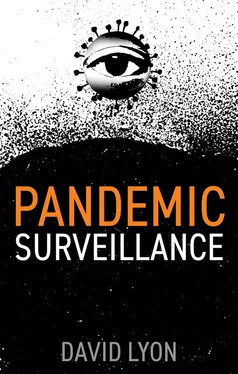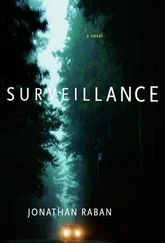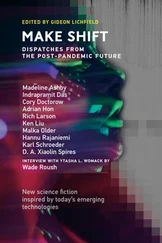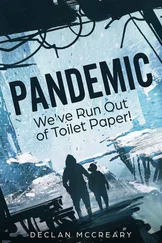This point is vital for any understanding of the COVID-19 pandemic. As an undergraduate student in the late 1960s, I read Albert Camus’s La Peste , 10a novel about a plague that broke out in Oran, Algeria in the 1940s. Although based on histories of a cholera epidemic that hit Oran in 1849, it describes in great detail the measures taken to try to contain the disease, firstly through the eyes of Bernard Rieux, the doctor who, when his building concierge caught a fever, first alerted the city to what was happening. Rats were dying in the streets and city workers had to clean them away and burn them – but that activity itself spread the infection. I never imagined, when I read the book as a student, that one day I would see something like this, only on a massive, international scale.
But what did I “see” as I watched the COVID-19 pandemic develop? I saw the effects of the pandemic in the context of an already existing set of public health practices learned most recently from SARS and H1N1, and of nationally varying on-the-ground activities. The latter depend heavily on the way in which governments-in-power work with technology platforms. This is surveillance capitalism, again. But Camus’s tale also rings bells today.
In Oran, as during COVID-19, the authorities were slow to grasp the seriousness of the situation, bickering over their response. Optimism was expressed in the official announcements, which led citizens to take the plague less seriously than was appropriate. Gradually, distancing was required and movement beyond the city restricted; hospital beds were set aside for victims but proved to be hopelessly insufficient. Likewise, when a serum was finally produced, supplies were far too small. In other words, La Peste is about a social, political and economic situation in a time of health crisis – with current resonance.
Interestingly, there are several epidemic accounts that are not dissimilar. Laura Spinney’s 2017 book 11about the “Spanish Flu” of 1918 – Pale Rider – describes the twentieth century’s most devastating killer. This is a fine journalistic reconstruction of surprisingly underexplored terrain. The flu pandemic was caused – gene-sequencing showed, decades later – by a virus that mutated and jumped to humans from birds, something not understood until the 1990s. But here too, the social and geopolitical context is crucial. War had weakened soldiers, returning from several fronts, and lack of supplies meant widespread under-nourishment. The fatal flu outbreak killed more than 50 million across many countries worldwide, causing unimaginable and dire distress, and although several cordons sanitaires , restricting movement in specific areas, were established, they were too little, too late for many. Also, those most vulnerable were between the ages of 20 and 40.
The phenomena associated with the eruption of a highly contagious virus cannot be understood merely by scientific health and medical knowledge. The historical, geographical and cultural context, described by Spinney and by Camus – among many others – shows the importance of the multiple social dimensions of pandemics. And as Nurhak Polat rightly argues, in the early 2020s one cannot but examine the role of digital technologies in any attempt to understand COVID-19’s manifold impacts. Therefore, she suggests – using “viral” in both actual and virtual senses – “Pandemics in the 21st century are inevitably embedded in the digital context. This also includes the digital and biometric surveillance technologies that track ‘viral footprints’ of COVID-19 across bodies, homes, streets, and borders.” 12In what follows, we shall consider the wearable trackers, phone apps, drones, remote body temperature checkers that have been sprung into service since COVID-19 began.
However, it is not enough just to discuss those digital technologies as they are applied to formal systems of surveillance, where all the emphasis is on how those systems bear down on “us,” the objects of surveillance. This is because we, those surveillance objects, are also subjects of surveillance. While the apps, the cameras, the wearables “watch” us, we also glance slyly at each other – checking for masks, for 2-meter distance on sidewalks, for signs that neighbors are meeting with others beyond family. Moreover, the way we are classified – “no symptoms,” “has received vaccine,” “was exposed to a carrier” – may affect the way we see ourselves and watch, assess, interact with others, including how we measure our relationships with them. This is because today we develop new cultures of surveillance, 13such that there’s a “looping effect” 14between the classifications and the people classified. Those classified not only classify others, but may modify their own activities due to their surveillance classification.
Pandemic and tech-solutionism
Almost all the proposed ways of dealing with the pandemic address only the symptoms, not the causes. They are Band-Aids, intended to contain and control the virus. At the time of writing, the original causes are not known to science, so the Band-Aid approach is understandable. Knowledge gleaned from many historical epidemics and pandemics informs how public health officials respond when new outbreaks occur. It is doubtful how much could be learned – except perhaps negatively – from the fourteenth-century Black Death, which killed huge swathes of the population around the Mediterranean. A wide variety of sometimes exotic treatments were proposed, from herbalism to blood-letting to self-flagellation, although doctors did learn to lance the bodily buboes that gave the disease its other name, “Bubonic Plague.”
But – as in the case of the nineteenth- and, especially, twentieth-century epidemics such as the “Spanish Flu” – isolation and segregation of patients, along with the search for a serum, became common patterns. They worked with what was available in their day. So today, we work with what’s available now. Keeping a physical distance – often misleadingly called “social distancing” – became commonplace, as did the need for mask-wearing and quarantine. And because ours is an era loaded with digital devices and systems – not to mention global corporations successfully selling these – data and data analysis, plus Machine Learning and Artificial Intelligence, are seen as key COVID-containing contrivances.
Thus, in the early twenty-first century, the pressures pushing “technological solutionism” 15are strong, and pandemic panic only adds further propulsion. As Rob Kitchin notes, those pressures include intense lobbying of governments by technology companies, their already-existing technocratic practices and their desire to stimulate high-tech innovation. 16This was already visible in the rush to find “solutions” after the 2001 attacks on New York and Washington known as “9/11,” when companies hastily used their home pages to offer simultaneous condolences to bereaved families and advertisements for their “anti-terrorism” products. And governments acceded, using techniques ranging from biometric tests to Artificial Intelligence to trace and impede terrorism. 17
The same kind of response follows in other similar situations. It also happened, for instance, following the terrorist attacks on Mumbai – centring on the Taj Mahal Palace Hotel and the Railway Terminus – in 2008. Very quickly, both maritime security and hotel security – scanners, maritime identification systems, biometric IDs for fishermen – were enhanced with new surveillance measures, and new National Security Guard (NSG) units were deployed in major cities. These were “required” because the attack was mounted from the ocean, and due to delays with the NSG, which at the time was based only near New Delhi. 18Today, in a global pandemic, such solutionism has a seductively powerful pull.
Читать дальше












